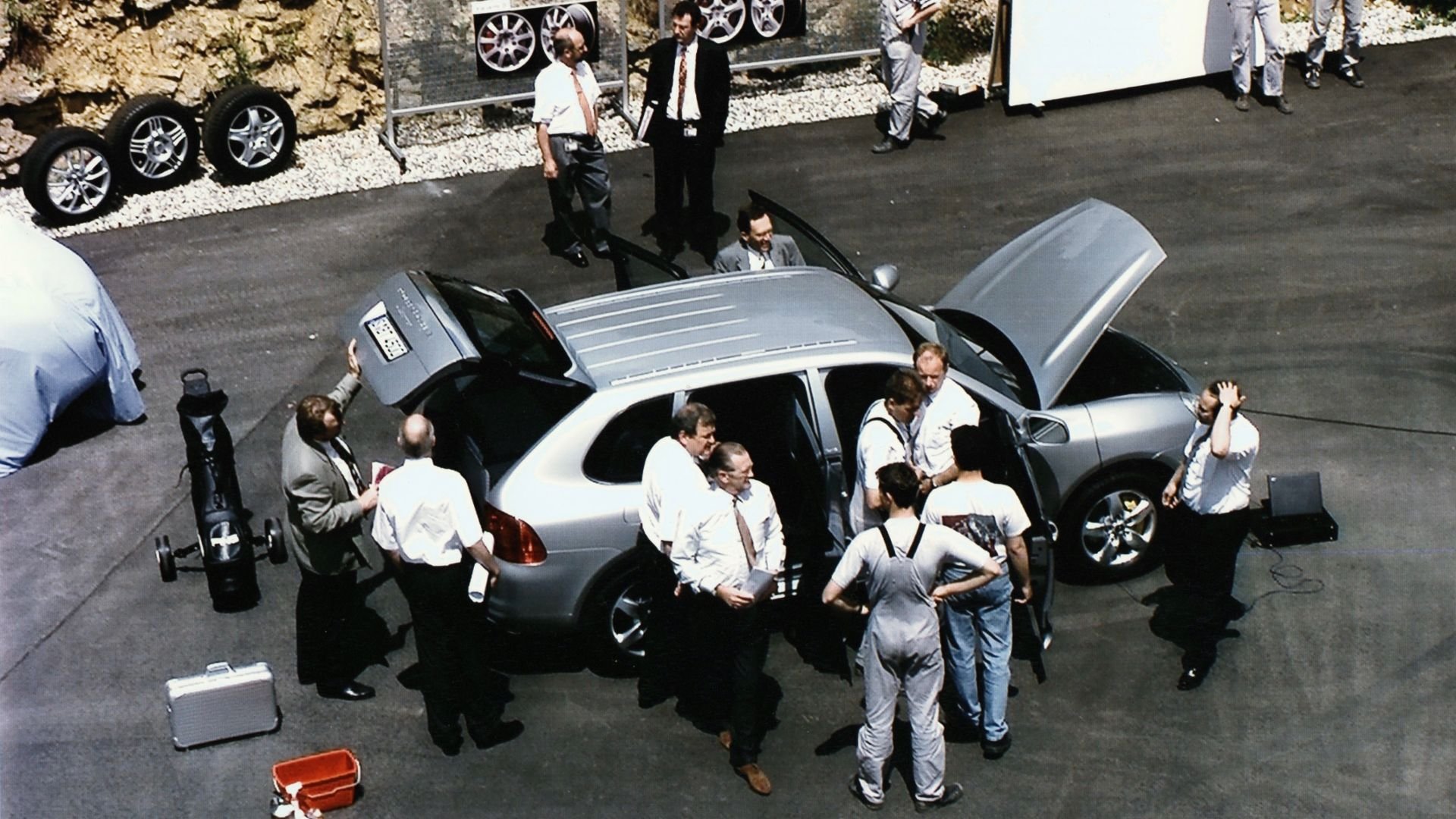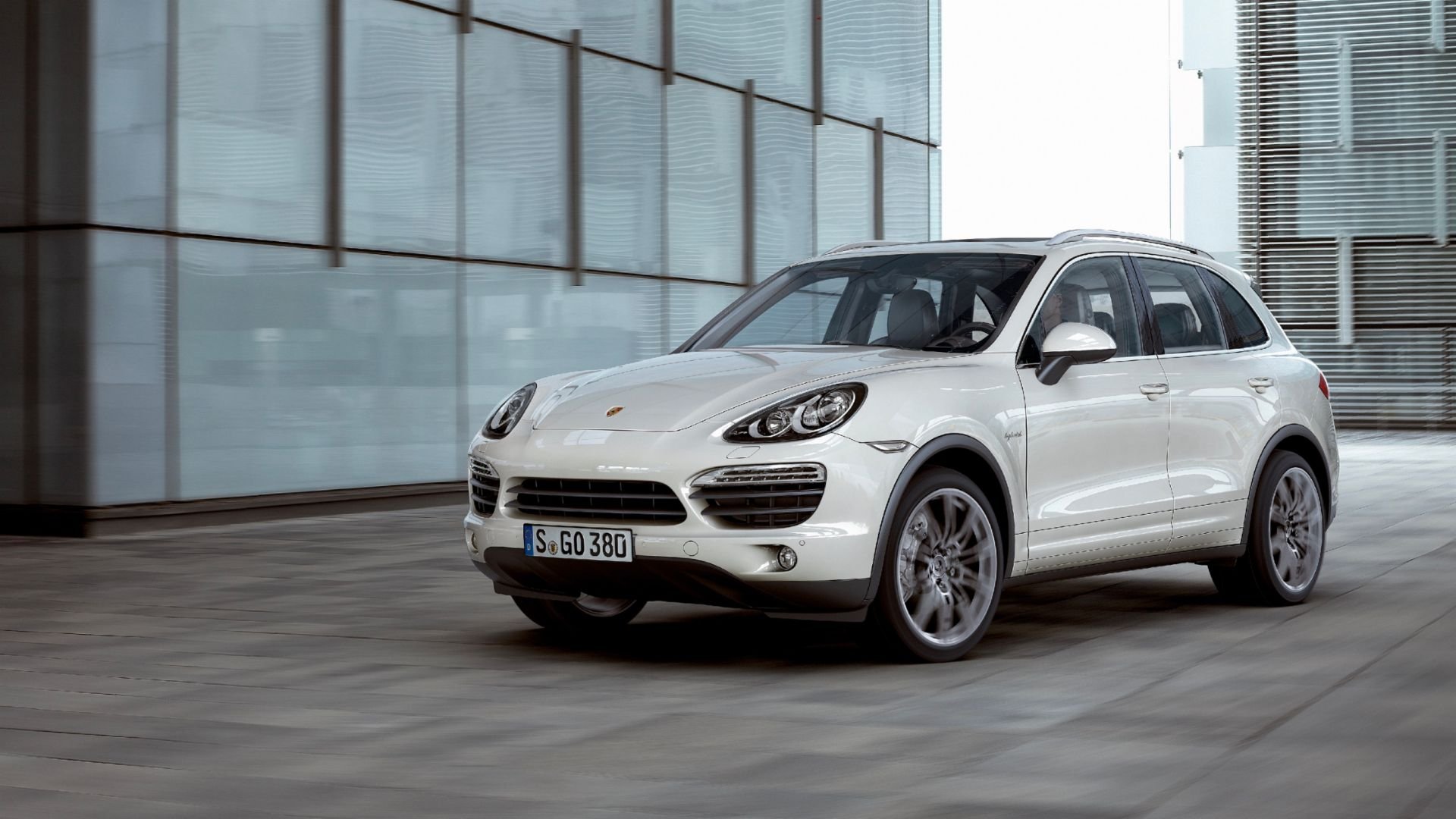The new Porsche Cayenne GTS isn’t turning electric yet
Porsche has revealed its new Cayenne GTS, which builds on the revised Cayenne of last year and is fitted with a 493hp (39hp more than the Cayenne S) twin-turbo V8 engine.
Available as an SUV or Coupé, the new model has 440Nm of torque (up by 40Nm) and is connected to an eight-speed automatic transmission with an active all-wheel drive system. The four-door sports car can do 0-62mph in 4.4 seconds and a top speed of 171 mph.
As is the case with every Porsche GTS model, black GTS lettering is used on the sides and rear of the car while the front end has bigger cooling air intakes, tinted headlights (same on the tail) and red brake callipers. special front end with bigger cooling air intakes. The whole car has been lowered by 10 millimetres to fit an air suspension system, which includes Porsche Active Suspension Management (PASM) and Porsche Torque Vectoring Plus (PTV Plus). There are gloss black finishes across the bumpers and skirts and the sports exhaust system tailpipes are now finished in a dark bronze tone, a change from the previous black.
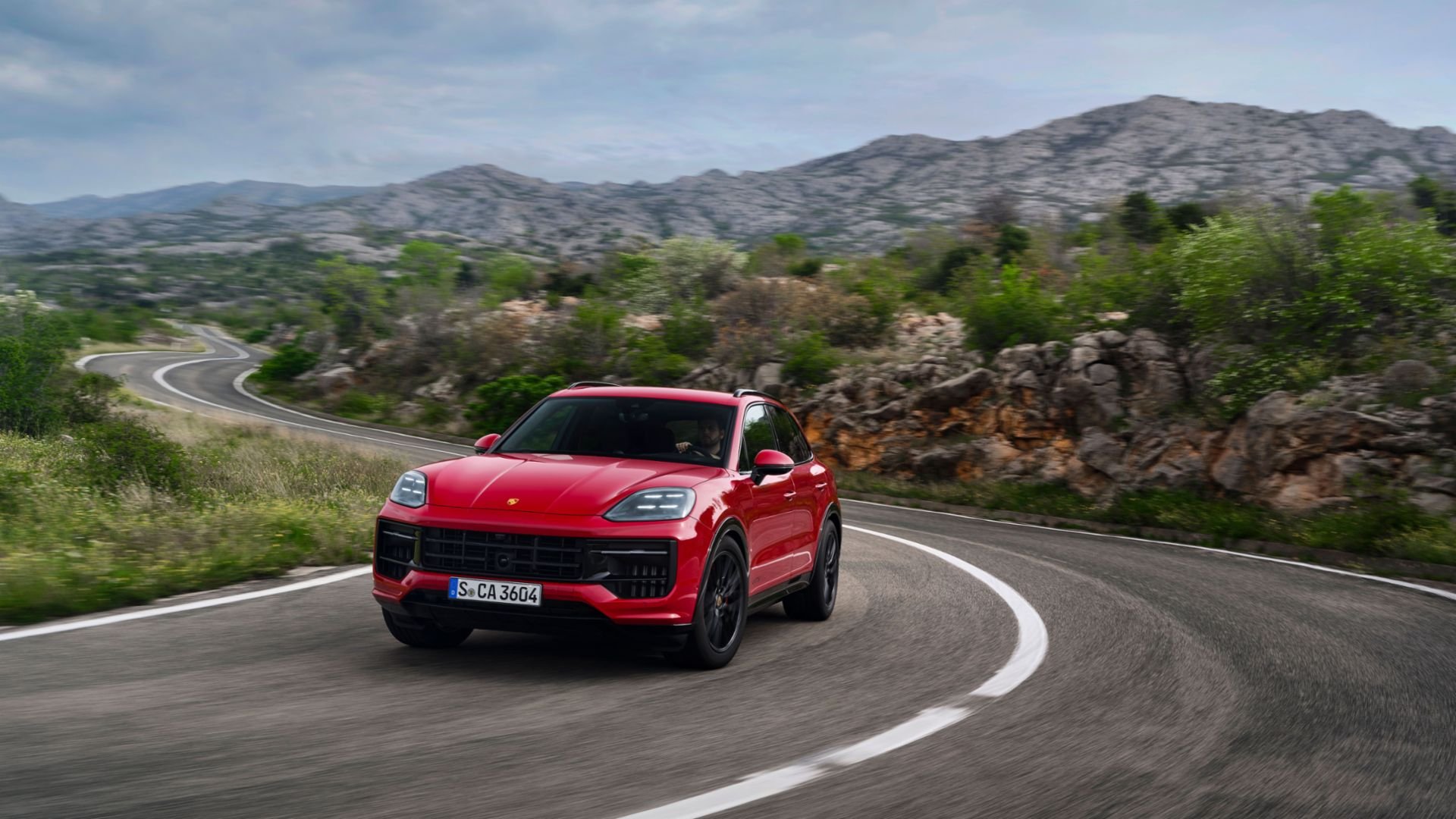
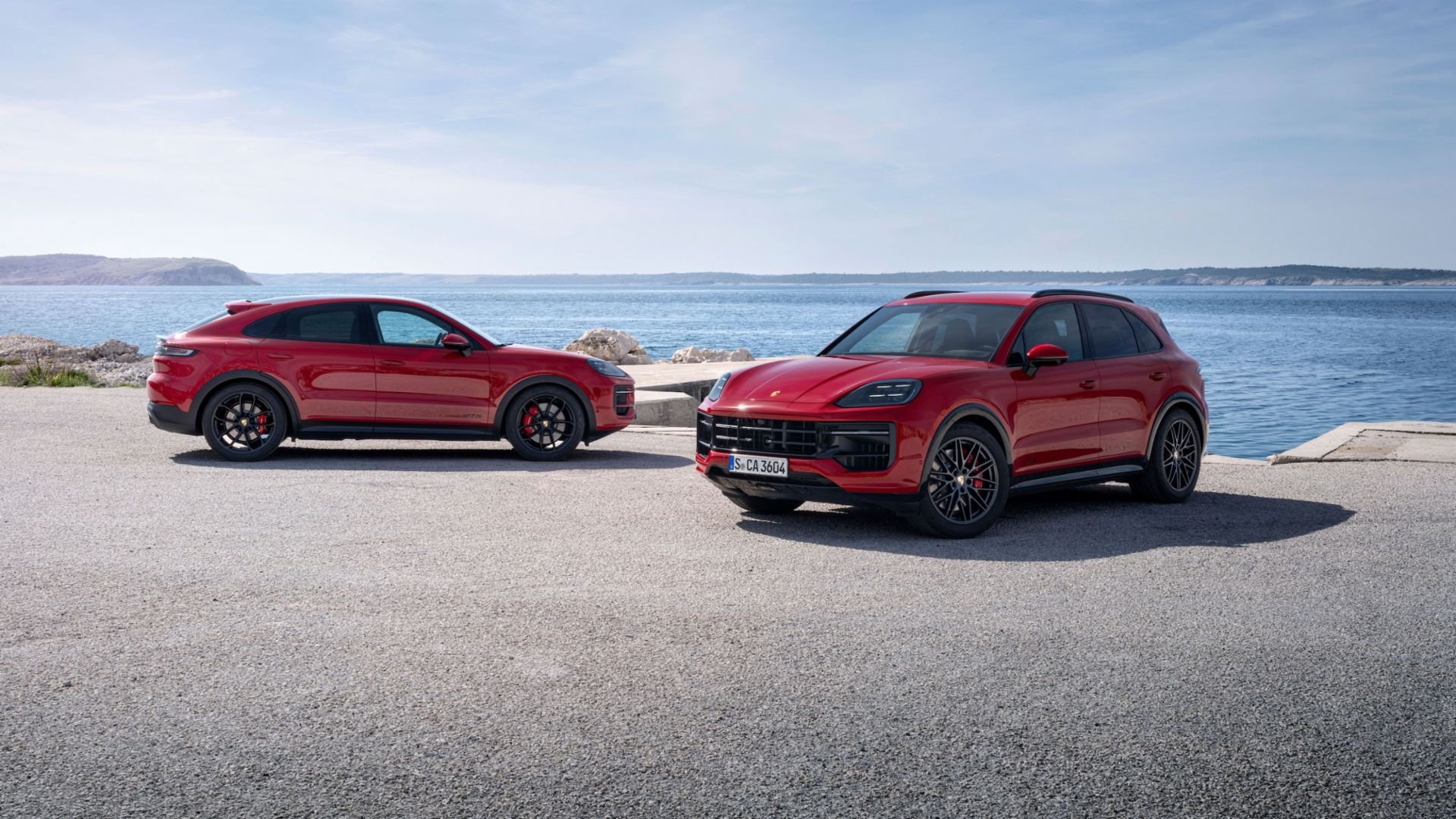
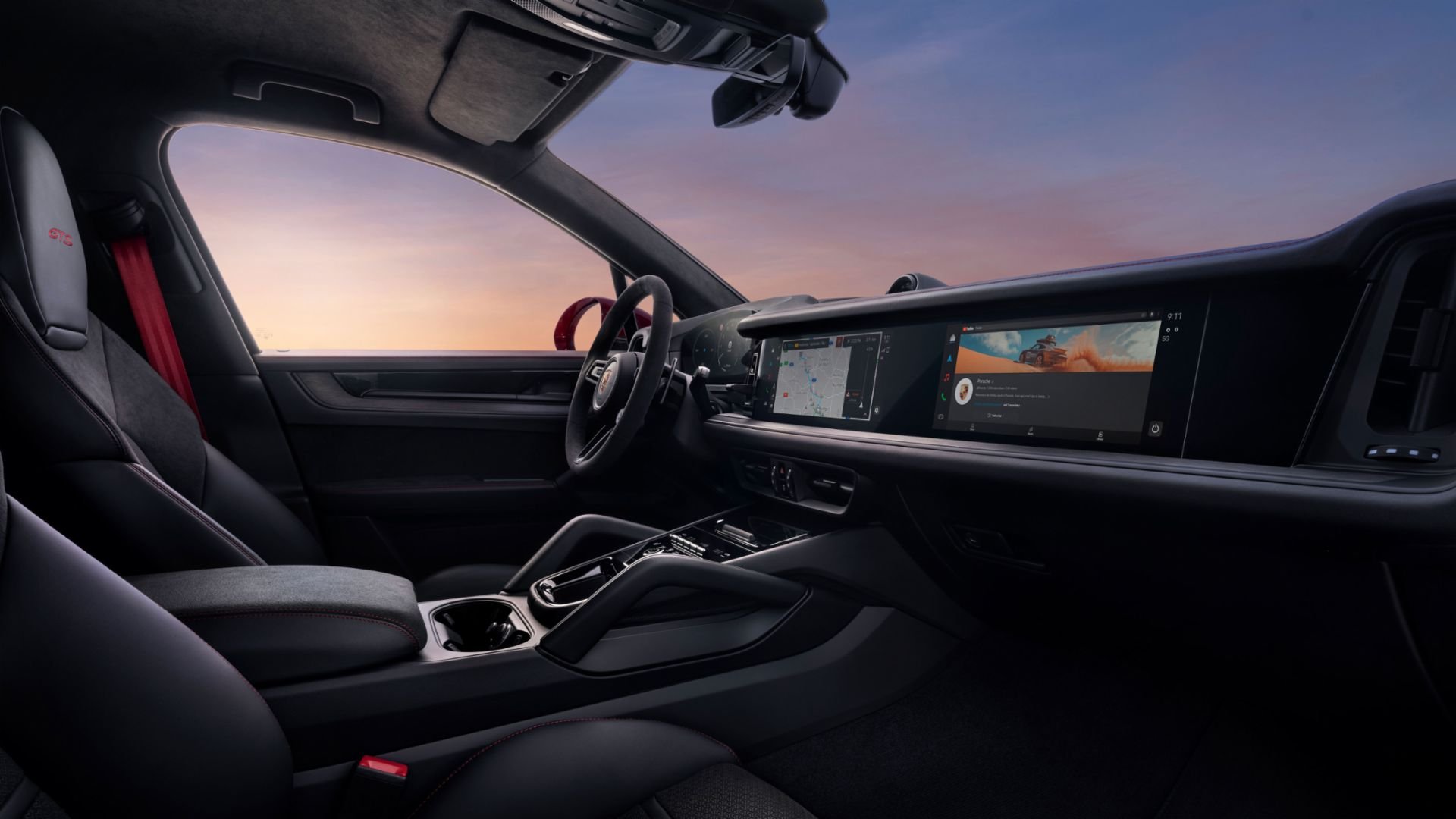
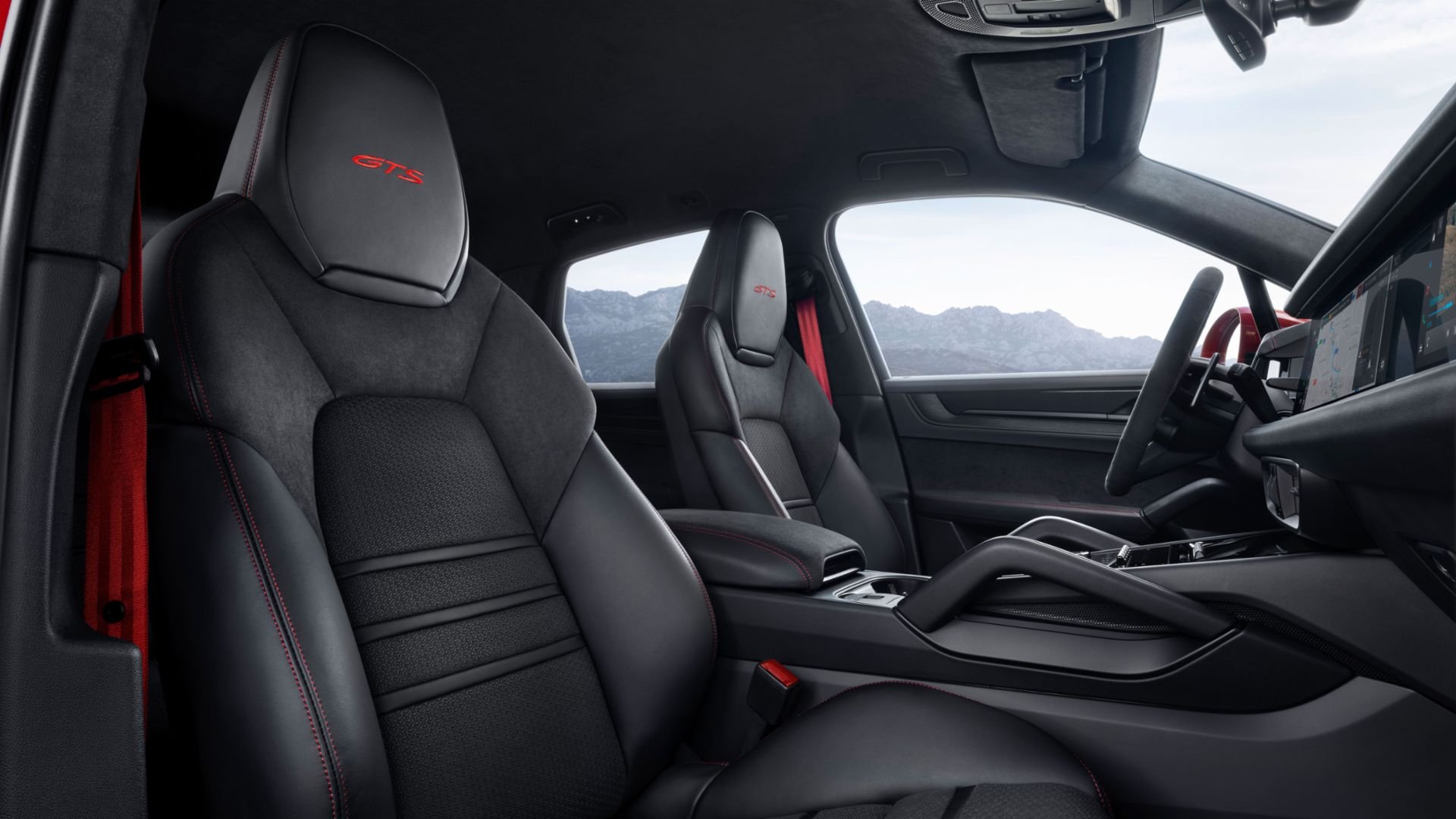
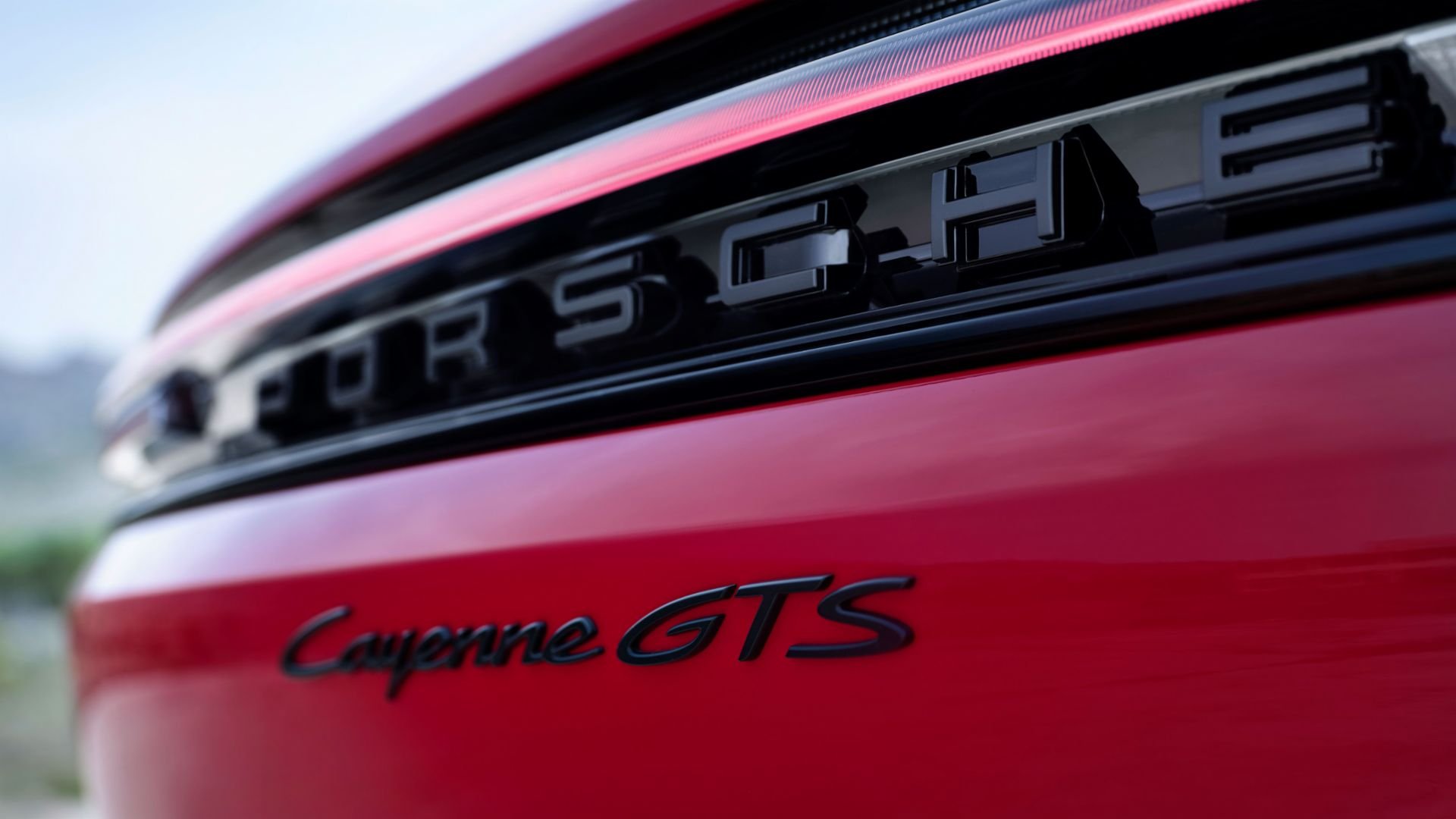
Inside the Cayenne GTS, there is a heated GT sports steering wheel as standard and raised side bolsters support when cornering. There is high-quality suede-like Race-Tex material used on the roof lining, armrests and door panels, although this can be changed to a GTS-specific Carmine Red. Ambient light and a premium Bose sound system are new features as standard while the Coupé models come with a panoramic roof and an extending rear spoiler.
There are three different lightweight sport packages, which come with a lightweight roof and carbon rear diffuser along with reduced insulation. All in all, Lightweight packages can reduce the weight of the vehicle by up to 25kg.
Both models are available to order from today and deliveries will begin to take place in the summer. Prices start from £106,100 for the SUV and £107,700 for the Coupe. An electric version of the Cayenne seems like it won’t be with us for a few years yet.
A history of the Cayenne so far…
When Ferry Porsche said in 1989; “if we build an off-road model according to our standards of quality, and it has a Porsche crest on the front, people will buy it,” little did he know that the Cayenne would be the model to save the Porsche brand over a decade later.
Cayenne model at the development centre in Weissach, 2000
In the early to mid-1990s, Porsche’s very existence was under threat as it experienced one of the most significant economic crises in its history. Only 23,060 cars had been delivered in the 1991/92 financial year and finances were in the red. The release of the Boxster in 1996 steadied the ship somewhat, although sales of Boxster and 911 wouldn’t be able to turn things around on their own.
Plans for a new ‘third Porsche’ began to take place and the company looked to take advantage of its popularity in North America with the manufacturing of an off-road vehicle - the popular type of car at that time. The emerging Asian market was also targeted and the aim was to build a sporty SUV - the Cayenne - in the spirit of the brand that would challenge its competitors.
With Volkswagen also on board as part of a joint project announced in 1998 called ‘Colorado’, the Porsche Cayenne and Volkswagen Touareg would share the same platform but initially use their own engines and chassis setups. Porsche developed the joint platform at its Hemmingen site, while VW set about helping navigate the large volume of production required.
In 1999, construction began on a new production facility to produce the Cayenne in Leipzig, Germany which was officially opened in August 2002 when production immediately began.
The Porsche Cayenne being unveiled at the Paris Motor Show, 2002
The first generation Cayenne was given its world premiere at the Paris Motor Show in September 2002 and was released a year later with a choice of two V8 engines. The Cayenne S had a newly developed 4.5-litre engine generating 335bhp and a top speed of 150mph while the Cayenne Turbo managed nearly 444bhp and a top speed of 165mph with the same displacement. Cornering was perfected with the new Porsche Traction Management system and off-road, a fully locking centre differential prevented wheelspin - all honed during testing in the dunes of Dubai. It also became the first car from the brand to feature the newly developed Porsche Active Suspension Management, offered together with air suspension, which felt the conditions of the road and the driver’s driving style to adjust accordingly.
Despite being released to a mixed reception at the time, the Cayenne was praised for its relative performance as an SUV and V6 and diesel-powered versions later joined the lineup. In the eight years of the first generation, 276,652 units were produced despite an expectation that only 25,000 would be sold. Porsche’s decision to build the Cayenne was vindicated.
Cayenne S Hybrid, 2010
The second generation of the Cayenne saw the previous low range transfer case replaced with an all-wheel drive system with an actively controlled multi-plate clutch, a system still used by Porsche today. This made the car almost 250kg lighter than the previous model. Hybrid and plug-in hybrid powertrains were also introduced and all existing engines were given additional power, with lower fuel consumption. Slightly larger than the first generation model, it featured a more slanted rear window, a more sloping roofline, door-mounted mirrors, headlights inspired by the Carrera GT and a newly redesigned interior which featured a rising centre console.
The car made its debut at the 2010 Geneva Motor Show with the standard model being powered by a 3.6-litre V6 engine producing 296bhp. The Cayenne S featured a 4.8 litre V8 producing 395bhp, while the Turbo version made use of a 4.8 litre twin turbo V8 producing 493bhp.
The 2010 Cayenne S Hybrid used a 3.0 litre V6 mated with a 35kW battery for 380bhp and set the tone for many future SUVs. The electric motor was used not only at low speeds but also at higher ones and improved both acceleration and flexibility. It was the first series production hybrid vehicle from Porsche and was followed by the plug-in hybrid version in 2014 which had around 18 miles of pure electric range.
Production ran from 2010-2017, during which time Porsche Cayennes were included in the Volkswagen Emissions Scandal. It also achieved a Guinness World Record for the heaviest aircraft pulled by a production car, as a 2017 Cayenne S Diesel towed a 265-ton Air France Airbux A380 for 32 metres.
Porsche Cayenne Guinness World Record
The third generation Cayenne was revealed in August 2017 on the roof of the Porsche Museum and production for the model was moved to Bratislava. It shared the same Volkswagen MLB platform as the VW Touareg, Audi Q7, Audi Q8, Bentley Bentayga and Lamborghini Urus.
The third-gen Cayenne received a redesigned front end with larger air intakes and a lower roofline, evoking styling from the 911. Despite being slightly longer (63mm) than the previous incarnation, it was around 65kg lighter than the second-gen model as it used a lighter chassis and plenty of aluminium.
While a diesel option was no longer available, all engines were turbocharged and equipped with an eight-speed Tiptronic S transmission. Base and S models were available from launch and were later joined by Turbo, E-Hybrid, Turbo S E-Hybrid, GTS and Turbo GT versions.
The Cayenne was once again a record breaker, this time at the Nürburgring where a Turbo GT iteration - driven by Lars Kern - managed a 7:38:925 lap, the fastest lap from an SUV.
Porsche Cayenne SUV lap record at the Nürburgring.
words: Mike Booth
pictures: Porsche
video: Air France & Porsche


